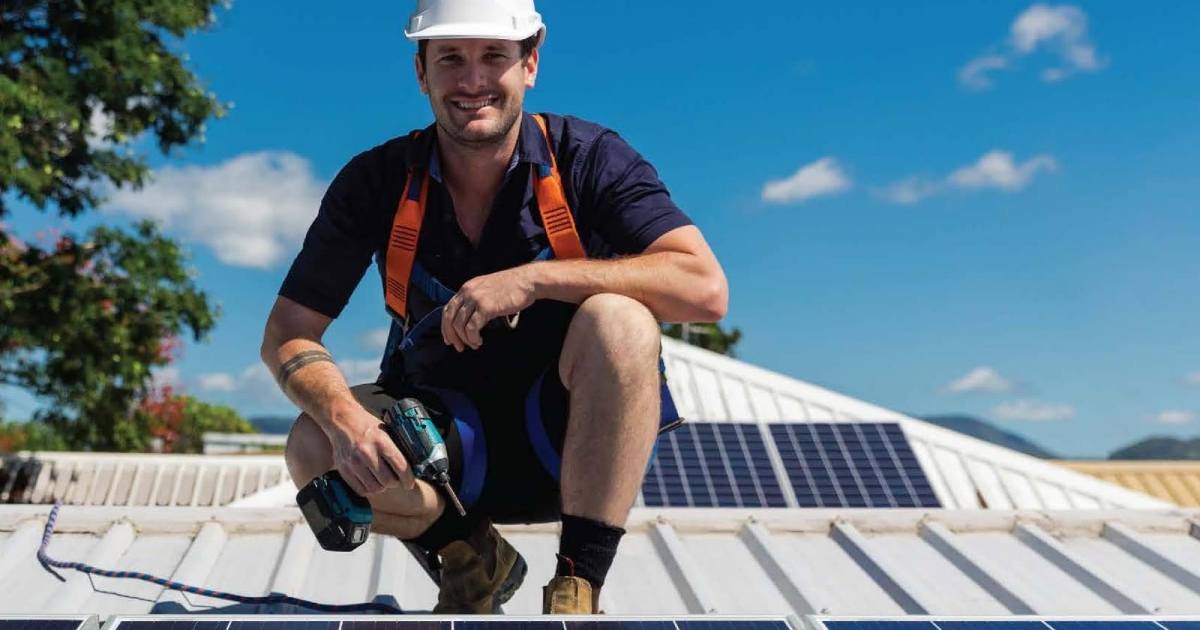
In the wake of recent flooding on the east coast, industry group Safer Solar is calling for mandated rapid shutdown technology on solar power systems in Australia.
Most rooftop PV systems in Australia output high voltage DC current that is delivered to the solar inverter installed on a wall below. This can be problematic in flooding, particularly if the inverter isn’t first switched off before inundation. Even if it is, the solar panels are still outputting power.
During recent floods on the east coast, we saw images of people awaiting rescue on rooftops – some of these with solar panels. Being on a rooftop isn’t particularly safe at the best of times, and a wet solar rooftop even less so. While rooftop DC isolators are useful in this scenario (one of the few where they are), there are still a bunch of panels cranking high voltage DC current to that point. There remains a risk of a powerful electrical current running through the roof if damage to wiring occurs.
Thankfully, there doesn’t appear to have been any serious injuries or deaths from live solar panels during a flood emergency in Australia to date. But safety can always be improved and it seems we are lagging behind other countries in this respect.
Safer Solar Systems With MLPE
MLPE (Module Level Power Electronics), aka Panel Level Optimisation (PLO) are technologies that can help reduce the risks. Two forms of MLPE are microinverters and power optimisers. These devices are installed on the back of solar panels or on the racking beneath them, usually one per panel. In the case of microinverters, the devices replace conventional string inverters and convert the DC output from a solar panel to safer AC.
Safer Solar spruiks these technologies as providing solar energy management systems able to:
- Quickly and easily shut down solar PV systems when the need arises
- Isolate individual solar panels that fail to meet safety standards through remote management
- Monitor solar panels remotely for problems to enable quicker post-disaster recovery.
The most popular microinverters used in Australia are manufactured by Enphase Energy – and it’s no surprise the company is involved with the Safer Solar initiative.
“Rapid shutdown is already mandated in the US so solar panels can be made to stop producing energy in the event of a disaster like fire, flood or tornado,” said Enphase Energy General Manager ANZ Wilf Johnston. “Even developing countries such as Thailand and the Philippines now mandate rapid shutdown systems.”
Mr. Johnston believes the risk in Australia is increased considering many systems are now 10 years old or more.
“Australia needs to mandate that replacements for these old systems and all new systems meet the highest safety standards – which includes rapid shutdown,” he said.
Master Electricians Australia is also backing the call for safer solar, stating in the short term it would be helpful for governments to launch information campaigns ahead of flood season.
“In the longer term, we need to address this through legislation and upgraded standards and we need our state governments and regulators to step up on this issue,” said Master Electricians CEO Malcolm Richards.
The use of microinverters and optimisers offer other benefits, such as increased flexibility in system design – but the use of MLPE devices will increase the cost of a system by around 20%.

 RSS - Posts
RSS - Posts



Speak Your Mind